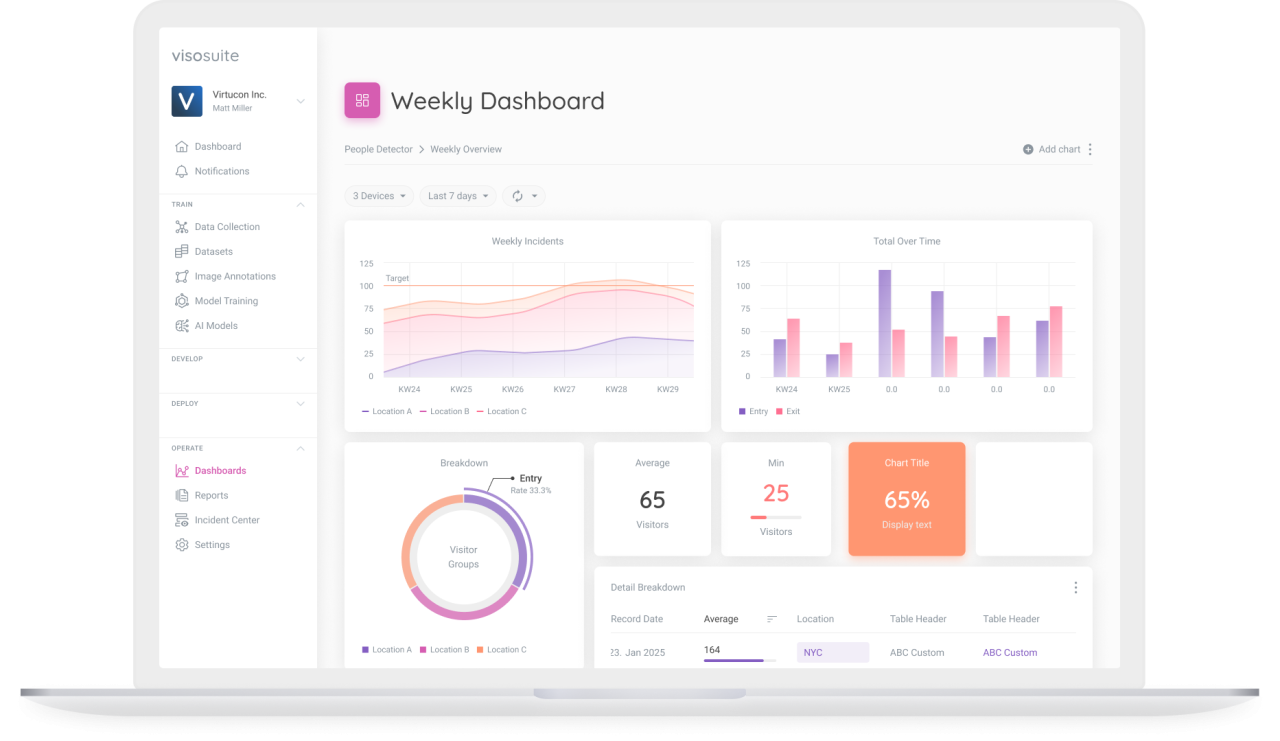The use of no-code platforms and their low-code relatives, which require minimal coding knowledge, is on the rise. This trend represents a step towards the decades-long goal in computer science to automate manual coding.
This article will cover the following topics:
- What are no-code and low-code platforms?
- Low code and no code for AI
- Business benefits of platforms
Today, the unprecedented demand for more business applications, the development of AI technologies, and higher expectations are putting tremendous pressure on IT leaders. Therefore, it’s not surprising that about 70% of digital transformations fail.
The value proposition of disruptive low-code AI technology gives companies the flexibility and agility to adapt to the fast-changing industry reality while accelerating the time-to-market of new applications to keep up with or change markets.
Note: Before diving in, we’d like to establish the difference between most minimal code solutions and Viso Suite.
Most no-code and low-code solutions are point solutions, designed to solve a specific problem in isolation—whether it’s object detection, image classification, or another standalone task. These tools can lack flexibility, requiring businesses to piece together multiple separate platforms to build a complete end-to-end solution. This leads to inefficiencies, compatibility challenges, and scalability limitations.
Viso Suite provides a fully integrated end-to-end computer vision infrastructure that utilizes minimal-code interfaces as a feature, part of the overall package. This allows organizations to build, deploy, and scale AI-powered vision applications without fragmentation. Instead of managing multiple disconnected tools, teams can leverage a single, unified platform that streamlines development, deployment, and management, reducing complexity while maximizing efficiency and scalability.
Types of Minimal Code Solutions
Low Code
Low-code is a software development technique that promotes faster app deliveries with little to no coding required. Hence, low-code platforms are a collection of software tools that allow the visual development of apps using intuitive modeling with a Graphical User Interface (GUI).
Low-code eliminates or significantly reduces the need for coding, accelerating the process of getting apps to production.
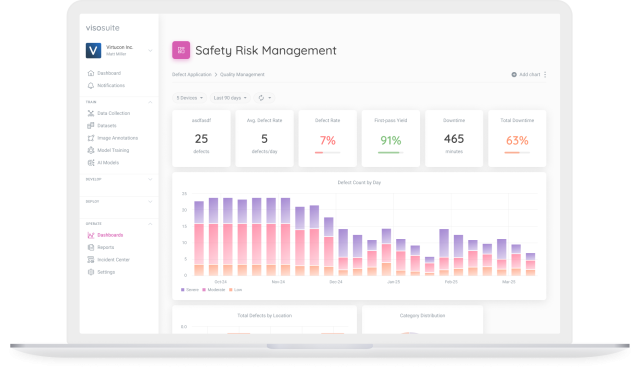
The idea of low-code was introduced in 2011. The concept of low-code is considered to be a novel and cutting-edge concept in the field of programming. Hence, development platforms that reduce code and automate development tasks for developers have recently started to become widely adopted.
To understand the growing adoption of the low-code development approach, it’s essential to understand its concept, the elements of low-code software tools, and the issues that low-code solves. Instead of traditional coding techniques, a low-code development framework provides a coding setting for developing software applications through a visual user interface.
These frameworks allow IT customers to integrate building blocks into applications and work processes. These components used to develop such software applications extract the programming behind actions and orders, enabling IT professionals to build interfaces and business apps without the need to code manually.
Low Code Platform
Low-code development platforms are based on the concepts of model-driven design, automatic code generation, and visual programming. Hence, low-code platforms are software applications that offer a GUI for coding to produce code rapidly thereby reducing conventional hand-coding efforts.
As a result, low-code platforms provide integrated tools to eliminate the need to write code line by line. Instead, the user can draw flowcharts in a visual editor, and the code will be automatically produced. In most of today’s commercial low-code/no-code platforms, users can create software applications by dragging and dropping pre-defined components. Today, common low-code software platforms for general development include Mendix, Outsystems, Creatio, Appian, and Creator.
A low-code platform is a set of tools for programmers and non-programmers. By lowering the difficulty level of app development processes, those technologies become accessible to a much broader audience. People are now able to build software applications without years of programming experience.
Compared to traditional software coding, the development of code with this approach becomes much faster. Accordingly, low-code platforms drive the adoption of complex emerging technologies in AI, IoT (or AIoT), or Edge Computing. We will discuss low-code platforms specifically built for AI tasks later in this article.
Low-code enables fast delivery of applications with minimal effort to write in a coding language and requires the least possible effort for the installation and configuration of environments, training, and implementation.
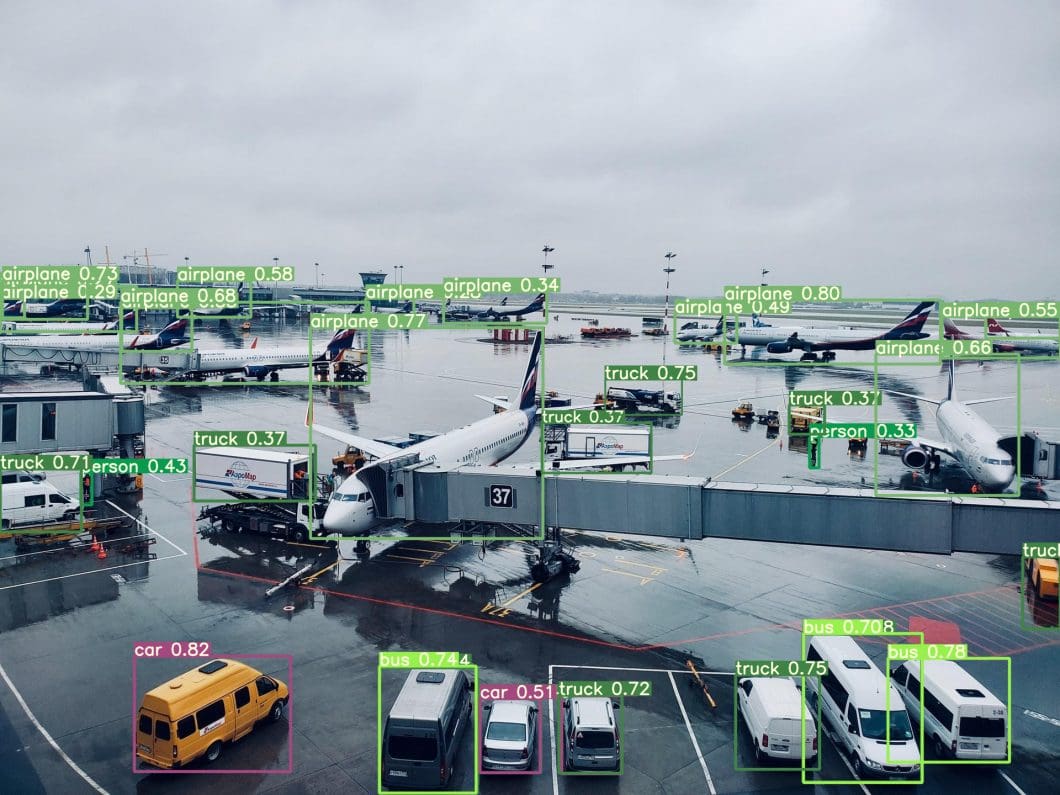
No Code
No code frameworks are software design systems that make it possible for non-IT people to implement software without writing a line of code. These software tools usually have an easy-to-use UI and drag-and-drop options, enabling the user to visualize the execution process and design the entire business logic visually.
No-code software uses a visual development interface to make it possible for non-technical people to create a full application by dragging and dropping software elements. In most cases, users do not need any coding experience to build apps with no-code software tools.
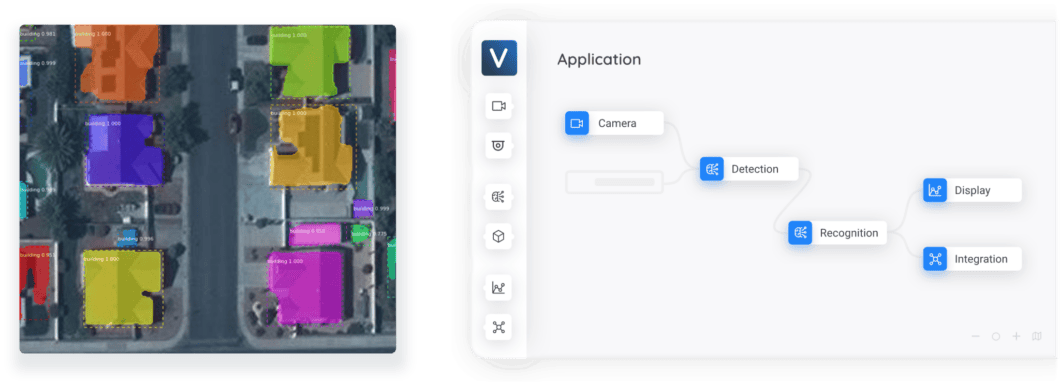
No Code Platforms
Along with low-code platforms, no-code development platforms are generally perceived as “extraordinarily disruptive”. No-code platforms are software platforms that leverage a visual development interface to allow non-programmers to build full applications.
Therefore, the platform users are not required to have coding experience for building software with no-code tools. Such platforms do not require users to have coding experience for building software with no-code tools.
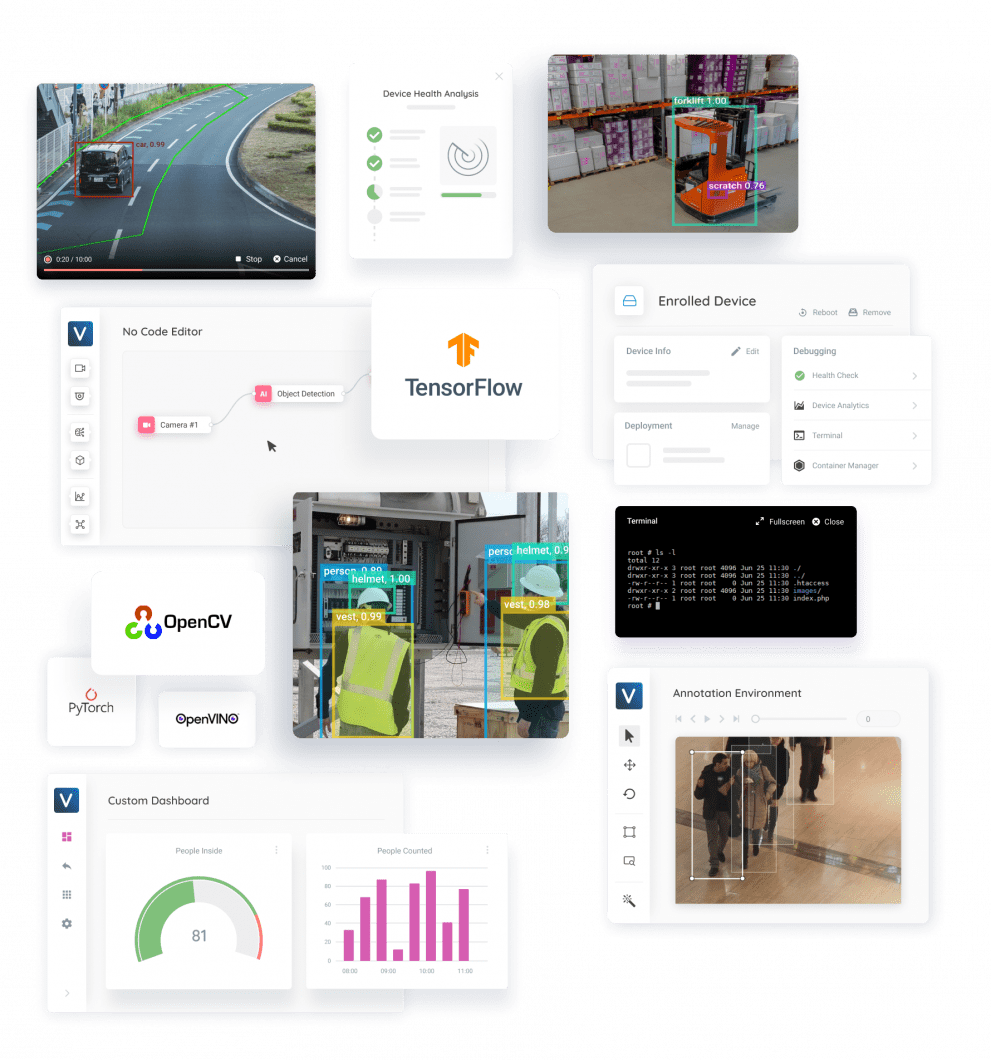
Application Development Platform
Application Development Platform (ADP) refers to a bundle of technology that helps companies and businesses design, build, and deploy their application. Hence, app development platforms are software tools that aid in app development processes by offering functionalities such as analytics, API, IDE, templates, code-free developments, and data synchronization. Hence, ADPs accelerate the app development process.
Several app development software platforms are used to build apps, mobile devices, and web browsers. These platforms provide APIs to simplify the process of integration with backend services. Moreover, it provides a visual development environment and makes the process of building software applications much easier.
Application Development Platforms offer functionalities such as hardware compatibility and assistance in workflow design. By doing so, they usually facilitate the development of user interfaces, business logic, and data services. They typically manage the entire life cycle of an application and support rapid application development, one-step deployment, execution, and management.
Without ADPs, companies end up using a mix of technologies, architectures, and programming structures, causing issues in application maintenance and operational bottlenecks. Large enterprises often have hundreds of applications running on various technologies and architectures. This leads to huge inefficiencies, cost overruns on app management, and stagnant response to business requirements.
Application development platforms enhance the agility and ability to respond to evolving business needs in the IT world. Currently, companies and businesses have started realizing the need to shift to unified ADPs that can build their engineering and technology foundation for all existing and future apps.
By leveraging an ADP to enable the rapid development of business applications, IT organizations are increasing the value they provide to clients while still enhancing existing infrastructure and maintenance projects. Especially since reliability, security, scalability, and infrastructure monitoring are provided by the platform.
Business Advantages of Minimal Code
The Need Coding Reduction
- Digital Business Transformation Drives Application DeliveryAs the technological landscape evolves quickly, the demand for technological solutions and AI technology is growing fast. Complex software such as AI systems involves large amounts of code and different frameworks and the Internet of Things (IoT). The wide range of complex technologies stretches the ability of a single individual to fully understand every technical aspect. Software must be delivered quickly, efficiently, and securely while upholding high-quality standards.
- Increasing Demand for Machine Learning SpecialistsConsequently, this leads to a higher demand for specialized skills and talents within the tech industry. As a result, businesses across industries need access to IT professionals with skill sets in different development categories. According to Gartner, the demand for information systems will increase five times faster than IT departments’ ability to provide them because the number of employees is not growing at a sufficient pace.
- Low-Code Drastically Accelerates Software DevelopmentThe emergence of low-code platforms offers ways to address those problems. Low-code platforms provide companies with the ability to significantly speed up application delivery, reduce the number of experts needed, and increase the scalability of IT systems. This can be achieved by substantially reducing the amount of code needed by breaking down essential functionality into reusable components that quickly can be put together and reshaped.
Development With Minimal Code
Low-code platforms will significantly change the development landscape regarding time to market, scope, development, maintenance, integration, and deployment compared to traditional development.
Key Advantages
- Low-code tools offer an intuitive and easy-to-use interface.
- Low-code development speeds up development, reducing the time to market.
- Low-code development reduces complexity in large projects.
- Low code makes it easy to scale applications from testing to production.
- Low code makes development flexible, as it comes with many integrations.
- Low code provides built-in security and maintenance, saving costs and time.
- Low code lowers development risks at a high return on investment.
Benefits of Low-Code vs. Traditional Development
Many benefits to the low-code/no-code development approach can be found. Most importantly, it often drastically speeds up the development process, leading to lower costs. Also, low code reduces the dependency on IT developers and allows for the integration of other departments in the development process.
The key differences between traditional vs. low-code development are:
- Time to market. Traditional development relies on manual coding, is slow to launch, and is slow to change. On the other hand, Low-code development uses drag-and-drop design, pre-built components, and is quick to launch.
- Scope. Traditionally, applications are planned and developed as large, complex projects. However, Low-code allows building multiple, typically rather small and independent solutions.
- Development. Traditional development is difficult to align with business demands and has slow turnaround times. Low-code development allows up to 5x quicker building, efficient testing, and higher ROI.
- Maintenance. Common development cycles require additional development and involve expensive support. Low-code development enables easy and quick updating or extending of the solution. This makes it excellent for prototyping.
- Integration. Traditionally, software integrations are time and investment-intensive. Developers and documentation are required, as well as extensive testing phases. Low-code development offers pre-built connectors, live debugging, and creating web services with no coding.
- Deployment. Usually, software deployment is slow and complex; it requires multiple steps and development resources. Low-code development offers one-touch deployment and deployment to multiple environments – a single click is all it takes to send an application to production.
- Low-risk/high ROI. With low-code, robust security measures, data integration, and cross-platform support are already built in and can be easily customized. This means less risk and more time to focus on the business.
Using Low-Code Platforms for AI Systems
Low-Code AI Platform
AI-based software and applications have the potential to disrupt business across industries. Therefore, businesses have to keep pace with the trend of technology evolving at a fast pace. However, Artificial Intelligence is a narrow, high-tech niche of software engineering, requiring in-depth knowledge of coding and technology. Hence, AI development is traditionally associated with advanced software engineering skills and significant development experience.
The transformative potential of low-code AI development is evident. Low-code AI is a game-changer in artificial intelligence, drastically simplifying regular application development tasks and bringing software development closer to users, making it accessible to a wide range of businesses.
The benefits of businesses using such low-code platforms for AI development include massive cost cuts on development, quicker time-to-market for their software, better product scalability, and a seamless and intuitive user experience.
Low-code/no-code machine learning models allow non-AI experts to create AI applications from pre-defined components. Such platforms are based on an intuitive graphical user interface for designing the application and visual programming as opposed to hard-coded programming techniques.
Low-Code vs. No-Code AI Development
The differences between low-code vs. no-code development are based on the fact that low-code development requires minimal programming input from the user, while no-code software doesn’t require programming at all. However, both low-code and no-code can involve the use of building blocks, while low-code facilitates the integration of custom software in the form of such building blocks.
When it comes to developing AI solutions, increasingly, more people will be able to create AI applications and use AI technology, freeing up highly trained coders to focus on the hardest problems.
The Users of No-Code
Low-code development is beneficial for different types of users to speed up their projects and simplify the deployment process. As the infrastructure around the application is already set up and managed out of the box, low-code AI platforms enable rapid development, testing, and scaling of apps. Popular tools, AI models, or frameworks are already integrated and offered to the users without dealing with infrastructure, security, scaling, or DevOps tasks.
- Low-Code for AI BeginnersLow-code and no-code AI platforms make AI technologies more accessible to people without the need to hire an AI developer full-time. Depending on the platform, it becomes easier for beginners to get started with AI technologies.
- Low-Code for DevelopersLow-code platforms also offer great potential for AI developers, for example, Computer Vision Engineers, to develop AI applications. Low-code allows developers to add their custom software or AI models as integrations to the platform. Furthermore, low-code programming of AI applications enables programmers and researchers to spend less time on repetitive coding tasks, write less code, and instead focus resources on the application’s functionality and optimization.
- Low-Code for Researchers
Researchers can speed up their experiments and projects with low-code development platforms. Most importantly, comparing different approaches and benchmarking multiple versions becomes easier. Also, researchers can rapidly prototype and test new tools (instant application testing after each change) without the need to invest in expensive infrastructure.
End-to-End Visual AI Platform for Enterprises
Viso Suite technology is worth mentioning because it is probably instructive of where the entire AI vision software space may be headed. Today, viso.ai has been a leader in AI vision software to create custom computer vision and deep learning applications that process video feeds of numerous cameras in real-time with deployed AI algorithms. To achieve this, we integrate numerous state-of-the-art computer vision techniques and algorithms to give firms complete control of their applications.
Because the platform works by essentially fine-tuning pre-trained AI algorithms and connecting pre-built modules in a visual editor, it becomes possible to develop a flexible;e and fully custom visual AI solution. The platform is designed for fast and automated continuous optimization of AI applications to achieve progressively better results.
Viso Suite allows building applications for multiple computing platforms simultaneously, adopting state-of-the-art hardware rapidly for quick PoCs. The high speed of development minimizes the time-to-market and maximizes the business value of AI solutions.
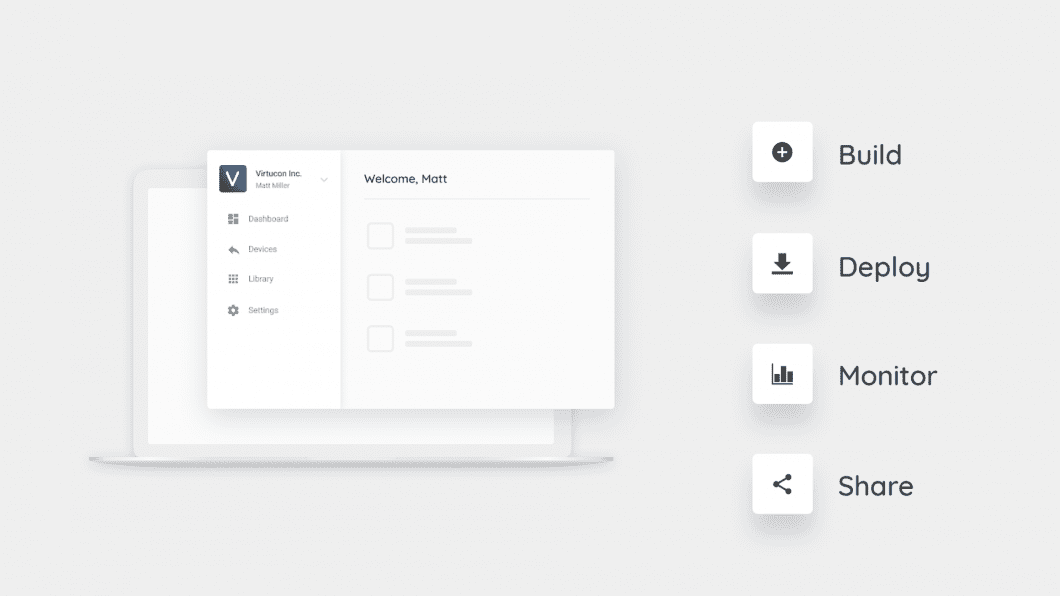
Function of Minimal Code Computer Vision
Minimal code AI enables people with limited coding knowledge to create AI systems. Thus, non-technical experts can quickly compile the needed software application with visual building blocks. Most low-code AI platforms include the following elements:
- Graphical User Interface. An intuitive Graphical User Interface (GUI) with clear visual elements, such as clear workspace navigation, that is understandable even to non-specialists, allows easy construction of AI vision applications.
- Pre-Built Integrations. For the created AI vision application to work with the visual input of cameras and pre-trained AI models, ready-to-use building blocks are offered to the user. The Low-code AI platform provider ensures secure data storage and communication.
- Application Manager. Creating an application with a low-code AI platform is only the beginning of the software development process. For the application to work well, it needs to be maintained and updated correctly. The platform commonly offers tools and support to eliminate bugs and improve the application’s functionality and performance.
Future Impact of Minimal Code AI
It seems too good to be true, doesn’t it? Non-programmers can develop full-fledged software applications. Great messaging, but isn’t it true that it doesn’t succeed in practice? To develop something nearly similar to a fully functioning program, you’ll need experienced coders. Low-code, on the other hand, isn’t just a concept; it’s a fact. It’s having a deep impact on the overall market right now, which is why it’s getting widespread now.
For instance, if you want to initiate a work process following a particular set of actions on your app, you use a coding language such as Python or a low-code/no-code (LCNC) framework that has already programmed the activities into code blocks that a device can quickly read and decode.
The forecast about the use of low-code/no-code development platforms follows a strongly positive curve. Accordingly, by 2024, more than 65% of applications will be developed using the low-code/no-code development approach. Also, by the same year, more than 75% of large enterprises will use at least four low-code/no-code development tools.
During the global coronavirus crisis, the need for software development has driven growth in demand for low-code/no-code development platforms. As a result, the worldwide low-code development technologies market is estimated to be USD 13.8bn.
What’s Next?
Low-code AI solutions help businesses significantly reduce the time to market AI solutions, allow significant cost savings on hiring software and Computer Vision Engineers, and offer the speed, simplicity, and flexibility of ready-made software solutions.
Explore industries to see how computer vision is applied in construction, sports, manufacturing, aviation, or smart cities.
Learn more about related topics:
- What you need to know about Computer Vision.
- Read about Edge AI – connecting Edge Computing with AI.
- An overview of Edge Intelligence, smart services at the Edge.
